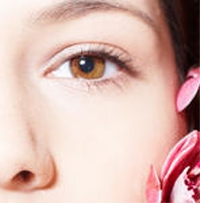
Effective treatments for anxiety disorders are available, and research is yielding new, improved therapies that can help most people with anxiety disorders lead productive, fulfilling lives. If you think you have an anxiety disorder, you should seek information and treatment. Psychopharmacology, the treatment of psychiatric disorders and emotional distress with medication, has developed over the last fifty years, as our understanding of the workings of the brain has increased in sophistication. When medication is prescribed for mental and emotional illness, the most frequent goal is to restore the chemical balance within the brain, thereby restoring equilibrium to the entire system. Certain drugs function to address certain symptoms, such as when sedatives are prescribed for insomnia. Medications can work to slow disease processes, such as when anti-oxidants are used to treat Alzheimer's. Still other drugs control cravings and curb other problematic behaviors, such as taken to control alcoholism. Most people with depression can get help from treatment. For most people, spotting depression early and getting it treated might cut down on how long and how serious the depression is. The most common treatments are antidepressant medicines, "talk" therapy, or a combination of both. You and your doctor can work together to decide on the right depression treatment for you. In many instances, medications are essential. If you suffer from mania, a major depression, or a paranoid disorder, medications may actually be able to restore you to your normal self. For other conditions, such as schizophrenia, medications control and modify symptoms to the degree that a person can stay in his community. Medications also ease the more distressing symptoms, allowing a person to engage in a therapeutic relationship and re-engage in the activities of her daily life. Sometimes a drug is a useful additional measure during particularly stressful times, perhaps in the initial stage of treatment or at a time of crisis. Those patients with thought disorders or hallucinatory experiences can be maintained only with appropriate antipsychotic medications. Experts have yet to agree on the root cause of anxiety disorders. In fact, most concede that several factors may be at work in each case. An imbalance in these neurotransmitters can cause a corresponding shift in our thoughts. But is the reverse also true? Can a determined change in our thinking alter the chemistry in the brain? Many experts are convinced this is true; and behavioral therapy aimed at changing our reactions does, in fact, cure many problems. Indeed, for some disorders, such as phobias, this type of therapy remains the most effective alternative.
read full
|

In zootomy and dermatology, skin is an organ of the integumentary system composed of a layer of tissues that protect underlying muscles and organs. As the interface with the surroundings, it plays the most important role in protecting against pathogens. Its other main functions are insulation and temperature regulation, sensation and vitamin D and B synthesis. Skin has pigmentation, provided by melanocytes, which absorbs some of the potentially dangerous radiation in sunlight. It also contains DNA repair enzymes which reverse UV damage, and people who lack the genes for these enzymes suffer high rates of skin cancer. One form predominantly produced by UV light, malignant melanoma, is particularly invasive, causing it to spread quickly, and can often be deadly. Human skin pigmentation varies among populations in a striking manner. This has sometimes led to the classification of people on the basis of skin color. See the article on human skin color. The outermost epidermis is consists of stratified squamous epithelium with an underlying basement membrane. It contains no blood vessels, and is nourished by diffusion from the dermis. The main type of cells which make up the epidermis are keratinocytes, with melanocytes and Langerhans cells also present. The epidermis can be further subdivided into the following strata (beginning with the outermost layer): corneum, lucidum, granulosum, spinosum, basale. Cells are formed through mitosis at the innermost layers. They move up the strata changing shape and composition as they differentiate, inducing expression of new types of keratin genes. They eventually reach the corneum and become sloughed off (desquamation). This process is called keratinization and takes place within about 30 days. This layer of skin is responsible for keeping water in the body and keeping other harmful chemicals and pathogens out. Blood capillaries are found beneath the epidermis, and are linked to an arteriole and a venule. Arterial shunt vessels may bypass the network in ears, the nose and fingertips. The dermis lies below the epidermis and contains a number of structures including blood vessels, nerves, hair follicles, smooth muscle, glands and lymphatic tissue. It consists of loose connective tissue otherwise called areolar connective tissue - collagen, elastin and reticular fibres are present. Erector muscles, attached between the hair papilla and epidermis, can contract, resulting in the hair fibre pulled upright and consequentially goose bumps. Functions of the skin are disturbed when it is dirty and it becomes more easily damaged. The release of antibacterial compounds decreases. Dirty skin is more prone to develop infections. Cosmetics should be used carefully because these may cause allergic reactions. Each season requires suitable clothing in order to facilitate the evaporation of the sweat. Sunlight, water and air play an important role in keeping the skin healthy.
read full
|

The permanent teeth are the second set of teeth that will last the rest of your life. They tend to be more yellow (and not just because of coffee) and are extremely hard. The final set of teeth is made up of 32 teeth, or 16 on each jaw. There are two central incisors for biting, two lateral incisors for biting, two canines for tearing and cutting, four premolars for chewing, and six molars for chewing. New developments include the implantation of artificial teeth or binding posts into the gums or jawbone; antibiotic fiber for periodontal disease; root canal surgery, a procedure that ameliorates pain while permitting teeth to remain in place; and nearly painless lasers to repair dental cavities, usually making local anesthesia unnecessary. Dental implants are fixtures of titanium which are surgically screwed into your jaw bone. The implant is an anchor for a naturally-appearing false tooth or a set of false teeth. The success rate of dental implants depends on where the implants are placed and their purpose. They are typically best placed in the front portion of your lower jaw.
read full
|
Read our other articles:
|